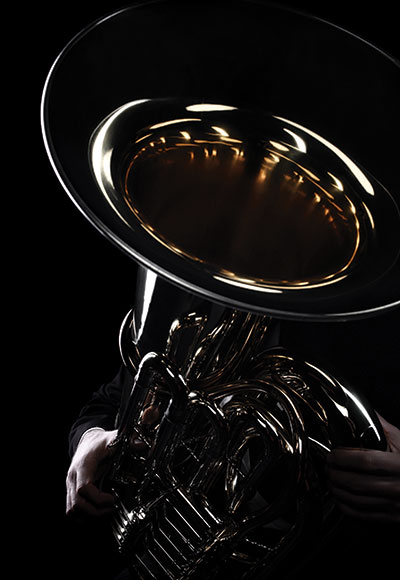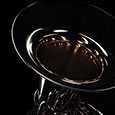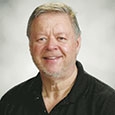Having a great bottom to your band’s sound is invaluable. For those like me who use the sound pyramid, a large tuba section provides an essential fundamental note in chords, as well as a balance on the low end to keep an ensemble from sounding top heavy. I try to have four tubas in every band, which takes considerable recruiting. Tuba should not be an instrument of last resort for students. Building a strong section takes students who are strong academically to drive the band and keep it on the beat.

Warmup
Before students play, they should always begin by buzzing on the mouthpiece at a moderate range and volume for 20-30 seconds. This gets the blood moving into the lips and helps the lips be more elastic and responsive. It improves endurance, range, and accuracy for that day’s playing.
When buzzing, cover half the opening at the end of the shank to create some air resistance. You could also use a B.E.R.P. resistance device or try placing a paper clip on the edge of the tuba’s receiver before partially inserting the mouthpiece. Another technique for improving accuracy and intonation is to match pitches on a piano or keyboard with your mouthpiece. Play various simple melodies on the mouthpiece to improve the ear and help center the tones.
Individual Warmup
This should include unmetered long tones of eight to ten beats focusing on consistent air speed. Remember to stop the tone just before the sound gets unsteady and take another relaxed full breath.
Work on lip slurs, first on the mouthpiece and then on the instrument. It is considerably more difficult to slur up than down, so don’t cheat the slur by tonguing the upper note when slurring back upward or by using a pop of air to reach the upper note. This cheating on slurs defeats the purpose of practicing them.
Air
Because I teach and play all brass instruments, I play the tuba less often than other instruments. When I have not played tuba in a while and have to prepare for a performance, I need to get my breathing back in shape much more than my tuba embouchure. Breathing in large amounts is an important part of playing tuba, but it is critical to breathe in more air than you think you need. In my mind I visualize filling my stomach, even pretending that I am filling air from the bottom of my chair. Next, I fill my back before finally breathing air into the upper chest. I am careful not to lift my shoulders. My breathing in all three areas occurs in one sweeping motion.
Always breathe low and outward from the body, especially where the stomach moves away from the body on the inhale. Do not breathe up, lifting your shoulders. Many of us have heard of an inhaling technique of breathing in and feeling a cold spot on the back of your throat, but I add one more step. Once you feel the cold spot on the back of your throat, try again and see if you can get that cold spot you feel a few inches further down the throat. Besides opening the throat for more air, if you can maintain that openness on the exhale it will open up the sound.
Remember that on the exhale the air should be kept constant, smooth, and steady, using sufficient air pressure on the back of the center of the lips. Imagine the bow of a string bass being pulled across the strings.
Embouchure
The corners of the mouth must remain in place and never smile back. The corners can go in towards the teeth and down, resembling a fish face. Never flap the lips; the center of the lips should never touch. Even in the lower range (low C, Bb, and Ab) the corners remain firm and anchored. The jaw lowers, and the inside of the mouth makes a cavern the size of a golf ball. The shape inside the mouth should combine an oh and an ah face into what could be an awe.
Common Bad Habits of Brass Players
Teeth too close. The air must move through the mouthpiece obstructed. Teeth that are too close create an extra sound. Clenched teeth make an R or an N sound instead of a round vowel sound.
Poochey lips. Brass players should avoid puckering, instead playing on the portion of the lips that is on the outside of the mouth and not on the wet fleshy inside part. Although all brass players should play with their lips wet, the lips should not protrude into the mouthpiece, except for tubas in the low range. When they play at a low Bb and below, the lips can extend into the mouthpiece but must remain taut like a diving board.
Smiling. Smiling is the killer of high range playing. The corners of the mouth should never go further back than your face looks in the mirror while completely relaxed.
Tight throat. This is usually caused by pushing the air from the upper chest, causing the throat to constrict. This frequently happens in the higher range.
Tonguing
Tonguing on tuba is difficult because players have to keep the oral cavity as round as possible. A more open mouth requires the tongue to travel farther to articulate and then get out of the way. I use a T and D hybrid articulation where I simultaneously think tdoh where T touches the correct place in the mouth but the D uses more tongue surface area lowers the tongue. Using the T on the front part of the doh Syllable also prevents the tongue from migrating to the roof of the mouth. I use tdoh for most notes, but for 16th notes I use toh to get a firmer front to the note and more air pressure at the tip of my tongue for clarity.
One technique for getting low notes to speak is to assist the tongue with a little bit of cough to punch out low notes. This is an advanced technique and not something to teach to a beginner.
Higher Range
When playing higher, the corners should not smile back at all. If the corners go back even a millimeter, it limits the range because the aperture gets flatter rather than smaller in diameter. Students should play higher by blowing faster air or thinking of getting the air to a distant point quickly. Merely blowing more air can force open the aperture to a diameter that will cause a missed partial. If anything, when students play in the upper range, the corners of the mouth will move inward toward the nose a tiny amount. Another tip is to aim the air towards the bottom of the mouthpiece slightly below the entrance to the shank, although this technique is best saved for F3 and above. Remember, if you can buzz it, you can play it. If you cannot buzz it, then you cannot play it; you will either miss the partial, or the correct pitch, even if played, will be fuzzy and otherwise distorted.
Musicianship and Practice Techniques
In many instances, brass players should think like vocalists, having direction to the lines and thinking horizontally, not just vertically. Keep the air going between the notes. Few tuba players have the air capacity for making phrases as easily as players of other instruments can. Learning to hide breaths by playing long notes and waiting until the last possible second to take a short breath.
Although mouthpiece buzzing is less fun than playing, buzzing helps center the pitches. One technique that leads to rapid results is Play-Buzz-Play. Have students play a phrase of their music to get the pitches in their heads, then buzz the same passage, and then immediately go back to the tuba and play, pretending they are still buzzing. Playing instantly while the buzzing muscle memory is fresh is the key to making this technique successful. Going through this approach one phrase at a time can be tedious but quite rewarding.
When I younger, cracking pitches was one of my most significant errors. I discovered that most of my cracks occurred following breaths, because I did not anticipate where my embouchure was going to set when reentering after the breath. Many students fear this same thing, which is why players incorrectly try to breathe through their noses or the lead pipe, so they do not have to relax and reset their embouchures after an open mouth breath. I fixed this problem by focusing on whether the next note is higher, lower, or the same.
Over the years, I found an exercise that has proven particularly helpful for concentration and muscle memory. Write 8-12 measures of a half note followed by a half rest, using random intervals (for younger players, keep it to 4-6 measures). Vary the intervals but keep them no larger than a perfect 5th. Students must play each measure (unmetered) three times without cracking before going on to the next measure. After each note they must take their face away from the mouthpiece, relax the embouchure, and then breathe and reenter on that note with no cracks. If someone misses a pitch or cracks an entrance, they have to start over at the beginning of the whole thing. Do not be surprised if students can’t complete this exercise; the objective is improved concentration.
If students are struggling with hitting larger intervals, have them play octaves chromatically, staring with G1 Play G1-G2-G1, then up a half step – Ab1-Ab2-Ab1. Continue this to Bb2-Bb3-Bb2. Players have to use different fingerings as they go higher, but this gets the face used to moving more quickly and confidently changing registers and also helps train the jaw to drop quickly going down.
The tip that has resonated most came from my private teacher when I was a freshman in high school. He urged me not to be intimidated by the size of the tuba and just “play that thing.” He meant that I should make that the tuba do what I wanted with a confident and aggressive mindset, especially with the use of air.






